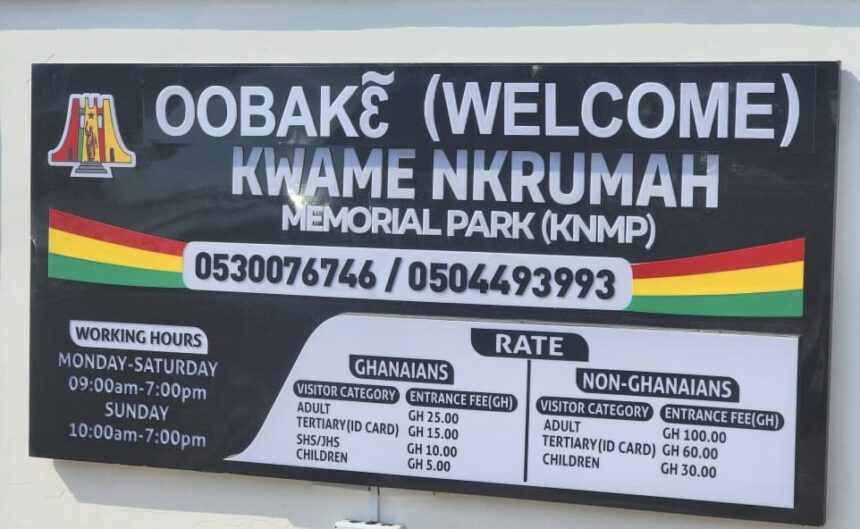Controversy Surrounding Welcome Signage at Kwame Nkrumah Memorial Park
Recently, there has been a stir on social media regarding the welcome signage at the Kwame Nkrumah Memorial Park in Ghana. Reports surfaced suggesting that the inscriptions on the signage had been changed, sparking a wave of speculation and debate among the public.
The Ghana Tourism Authority (GTA) swiftly responded to these allegations, with CEO Maame Efua Houadjeto issuing a statement to clarify the situation. The GTA refuted claims of changing the culturally significant greetings “Woezoe” and “Akwaba” to “Oobakɛ” on the signage. They emphasized the importance of preserving Ghana’s diverse cultural heritage and stated that any changes would require consultation and approval from relevant authorities.
Amidst the confusion, questions arose about who authorized the alleged changes to the signage. Attempts to seek clarity from the Kwame Nkrumah Memorial Park’s Acting Director and the Ministry of Tourism, Culture, and Creative Arts were met with silence and lack of information.
The controversy stemmed from Ga agitators advocating for the inclusion of a Ga inscription on the signage, citing the need to represent and preserve their culture. While the debate rages on, it highlights the complexities of cultural identity and the importance of inclusivity in national symbols.
The Significance of Language and Culture
Language and culture are intertwined aspects of identity that evolve over time through influences from various sources. In Ghana, words and expressions from different tribes have become part of the national fabric, blurring tribal lines and fostering unity.
While the Gas’ push for representation is valid, it raises questions about the balance between preserving cultural heritage and maintaining national cohesion. The debate over “Akwaaba” versus “Oobakɛ” underscores the delicate balance between honoring tradition and embracing diversity.
As we navigate these conversations, it is essential to acknowledge the richness of Ghana’s cultural tapestry and find ways to celebrate and promote all aspects of our heritage. Unity in diversity should be our guiding principle, allowing room for inclusivity while upholding our national pride.
In conclusion, the welcome signage controversy serves as a reminder of the complexities of cultural representation and the need for open dialogue and understanding. By embracing our diversity and honoring our shared values, we can forge a stronger and more inclusive national identity.








